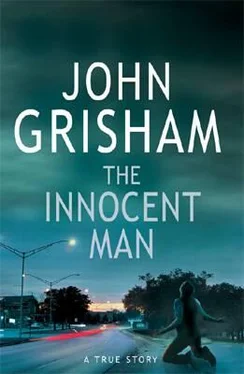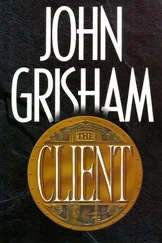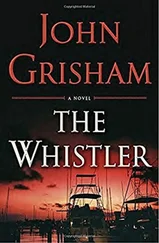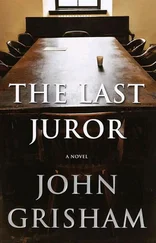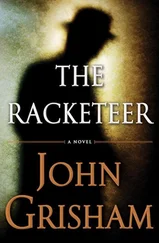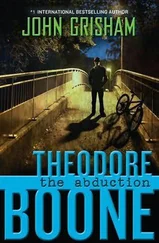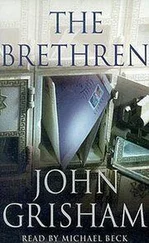Dennis, overcome by the weight of Harjo's deft logic, withered under the burden and tearfully said, "We didn't mean to hurt her."
When Harjo first spun this yarn during the preliminary hearing, Dennis erupted and yelled, "You are lying! You are lying!" But with a jury watching closely, he had to suffer through it again without showing any emotion. While it was difficult, he was encouraged to see several of the jurors suppressing a chuckle at Harjo's silly story.
On cross-examination, Greg Saunders established that Dennis and Harjo were housed in one of the jail's two bullpens-small, open areas accessible to four cells with two bunks each. Each bullpen was designed for eight men but was often more crowded than that. Even in the bullpen the men were practically breathing on each other. Surprisingly, in the Pontotoc County jail, no one else heard Dennis's dramatic confession.
Harjo testified that he enjoyed telling lies to Ron about Dennis, and vice versa. Greg Saunders asked him, "Why were you lying on Dennis and Ron Williamson? Why were you going back and forth and telling them lies about each other? "
"Just to watch and see what they say. They'll cut each other's throats if you watch them."
"And you were lying to Ron about Dennis, or lying to Dennis about Ron; is that right, kind of to get them at each other's throats?"
"Yeah, just see what-see what they'd say."
Harjo later admitted he did not understand the meaning of the word "perjury."
The next informant was Mike Tenney, the jailer-trainee who'd been used by the police to gather some dirt on Dennis. With little experience or training in law enforcement, Tenney began his career at the jail, and his first assignment had been Dennis Fritz. Eager to impress those who might hire him permanently, he spent a lot of time outside Dennis's cell, chatting about everything but especially about the Carter murder. He had plenty of advice. In his learned opinion, Dennis's situation looked grave, so the best thing to do would be to cut a deal, negotiate a plea bargain, save his own skin, and testify against Ron Williamson. Peterson would be fair.
Dennis had played along, careful to say nothing because anything might be repeated in court.
Being a rookie, Tenney had not testified much and had not fully rehearsed his lines. He began by trying to recall a story about Dennis and Ron hopping bars in Oklahoma City, a story not even remotely connected to the Carter murder. Saunders objected. Judge Jones sustained.
Then Tenney stepped into hot water when he testified that he and Dennis discussed the issue of a plea bargain. Twice he mentioned a plea bargain, a highly prejudicial issue because it strongly implied that Dennis had contemplated pleading guilty.
Greg Saunders objected loudly and moved for a mistrial. Judge Jones overruled. Tenney finally managed to testify without the lawyers jumping to their feet. He explained to the jury that he had spoken often with Dennis, and after every conversation he had hustled back to the front desk at the jail and written down everything that was said. According to his handler, Gary Rogers, this was the way things were done. Good police work. And during one of their little chats Dennis allegedly said, "Let's say it might have happened this way. Maybe Ron went to the door and broke into Carter's apartment. And then, let's say, he went ahead and got a little. Ron got a little bit carried away and was going to teach her a lesson. She died. Let's say it happened this way. But I didn't see Ron kill her, so how can I tell the D.A. something I really didn't see."
After Tenney, the trial was recessed for the day, and Dennis was taken back to the jail. He carefully removed his new suit and put it on a hanger. A guard took it up front. He stretched out on his bunk, closed his eyes, and wondered how the nightmare would end. He knew the witnesses were lying, but did the jury?
The next morning Bill Peterson called to the stand Cindy Mclntosh, who admitted being in jail on bad-check charges when she met both Dennis Fritz and Ron Williamson. She testified that she overheard the two talking, with Ron asking Dennis about the crime scene photos of Debbie Carter.
"Was she on the bed or on the floor?" Ron asked Dennis.
On the floor, Dennis said.
Mclntosh admitted that she was not convicted on the check charges. "I paid off the checks, and they let me out," she said.
With the snitches out of the way, Peterson returned to more credible proof. Slightly more credible. He called to the stand four consecutive witnesses who worked for the state crime lab. Their impact on the jury was profound, as it always is. They were educated, trained, certified, experienced, and they worked for the state of Oklahoma. They were experts! And they were there to testify against the defendant, to help prove his guilt. The first was the fingerprint expert, Jerry Peters. He explained to the jury that he examined twenty-one prints lifted from Debbie's apartment and car, nineteen of which were Debbie's. One matched Detective Dennis Smith, one matched Mike Carpenter, and not a single fingerprint belonged to either Dennis Fritz or Ron Williamson.
Odd that the fingerprint expert would testify that none of the fingerprints were left behind by the accused.
Larry Mullins described how he reprinted Debbie's palms the previous May when her body was exhumed. He gave the new prints to Jerry Peters, who suddenly saw things he hadn't seen four and a half years earlier.
The prosecution's theory, the same one to be used against Ron Williamson, was that during the prolonged and violent assault Debbie was wounded, her blood somehow ended up on her left palm, and this palm touched a tiny portion of Sheetrock just above the floor of her bedroom. Since the palm print did not belong to Ron or Dennis, and it certainly could not belong to the real killer, it had to be Debbie's.
Mary Long was a criminalist who worked primarily with body fluids. She explained to the jury that about 20 percent of all people do not show their blood type in body fluids such as saliva, semen, and sweat. This segment is known in the trade as "non-secretors." Based on her examination of the blood and saliva samples from Ron and Dennis, she was certain that they were non-secretors.
The person who left the semen at the crime scene was probably a non-secretor too, though Long was not certain because the evidence was insufficient. Thus, 80 percent of the population was eliminated from suspicion. Or "around" 80 percent, give or take a few points. Nonetheless, Fritz and Williamson now bore the ominous tag of "non-secretors."
Long's math was blown away on cross-examination when Greg Saunders forced her to admit that most of the blood and saliva samples she analyzed in the Carter case came from non-secretors. Of the twenty samples she examined, twelve were from nonsecretors, including Fritz and Williamson.
Sixty percent of those in her pool of suspects were non-secretors, as opposed to the national average of only 20 percent. It didn't matter. Her testimony excluded many and helped raise the suspicion hanging over the head of Dennis Fritz.
The state's last witness was by far its most effective. Peterson saved his knockout punch for the last round, and when Melvin Hett finished testifying the jury was convinced. Hett was the OSBI hair man, a veteran testifier who'd helped send many people to prison. Forensic examination of human hair got off to a rocky start as far back as 1882. In a Wisconsin case that year an "expert" for the state compared a "known" hair sample with one found at the crime scene and testified that the two came from the same source. The source was convicted, but on appeal the Wisconsin Supreme Court reversed and said, strongly, "Such evidence is of the most dangerous character."
Thousands of innocent defendants could have been spared if that decision had been heeded. Instead, police, investigators, crime labs, and prosecutors plowed ahead with the analysis of hair, which was often the only real clue left at a crime scene. Hair analysis became so common and so controversial that it was studied many times throughout the twentieth century.
Читать дальше
